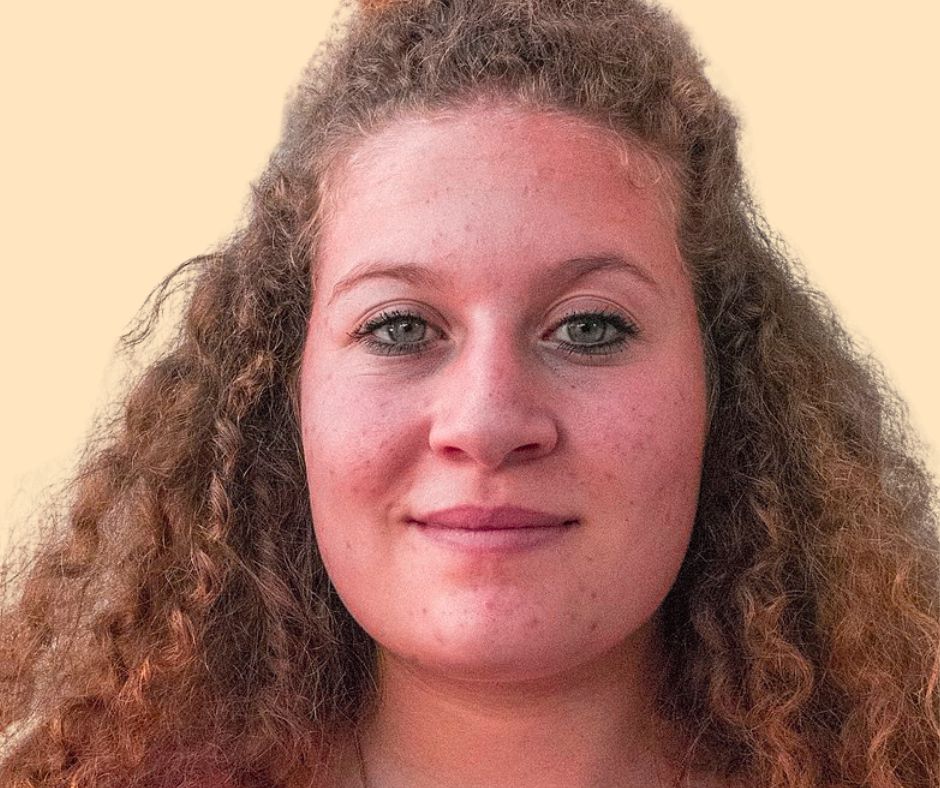In the rolling hills of the occupied West Bank, where ancient olive trees cling to the earth as steadfastly as the people who tend them, a young girl grew up watching the shadows of conflict stretch across her village. That girl was Ahed Tamimi, and she would grow to become a symbol of defiance — a lioness of resistance whose courage reverberated far beyond the borders of Palestine.
Roots of Rebellion: Childhood in a Warzone
Ahed was born on January 31, 2001, in Nabi Saleh, a small village in the Ramallah district of the occupied West Bank. Her parents, Bassem and Nariman Tamimi, were no strangers to the struggle for Palestinian rights. Her father, a well-known activist, had spent years in Israeli prisons, and her mother chronicled their daily resistance, often filming Israeli incursions and arrests with a steady hand and an unshaken voice.
From an early age, Ahed was immersed in a life punctuated by protest, oppression, and unyielding resolve. In Nabi Saleh, the village lands and a vital spring had been seized by settlers from the nearby illegal Israeli settlement of Halamish. What began as weekly demonstrations against this seizure grew into a sustained movement, with villagers — children, elders, and everyone in between — standing firm in the face of military crackdowns.
It was in these charged confrontations that Ahed first became known to the world. Blonde-haired and blue-eyed, she stood out visually from the common stereotypes painted in international media. But it was her bravery — her unflinching readiness to confront armed soldiers with nothing but her voice and defiance — that caught the world’s attention.
The Moment the World Watched
In December 2017, Ahed, then 16, was captured on video slapping and pushing Israeli soldiers who were standing outside her family’s home following a military raid. Just hours before, her 15-year-old cousin Mohammed Tamimi had been shot in the head by a rubber bullet, fracturing his skull. The soldiers refused to leave, even as tensions ran high and grief clung to the cold winter air.
Ahed’s confrontation with the soldiers was defiant, emotional — a boiling over of years of pent-up pain and anger. But for Israel’s military authorities, it became an opportunity. Days later, Ahed was arrested in a pre-dawn raid, her home stormed by soldiers. She was held in Israeli detention, interrogated without the presence of a lawyer, and charged with multiple counts of assault and incitement.
Her arrest sparked a global outcry.
A Symbol of Resistance
While detained for eight months, Ahed refused to bend. Her image, clad in prison garb with a fierce stare, became a rallying cry for Palestinian resistance. Activists, politicians, artists, and ordinary citizens around the world shared her story. The hashtag #FreeAhed trended globally. She was dubbed “the Lioness of Palestine” and “Shir Ha’Am” — the Song of the People.
To her supporters, Ahed was not just a girl in prison. She was a voice for millions — for children who grew up under occupation, for families torn apart by night raids, for youths arrested without trial, for those whose stories never made headlines. Her resistance was not in isolation; it was inherited, nurtured, and lived daily by her community.
A Girl Who Fought Back
When Ahed was released in July 2018, she emerged to a crowd of chanting supporters, her face set with the same resolve. “The resistance continues until the occupation ends,” she said, standing among her family and neighbors. She did not claim to be a hero, but rather a daughter of a people who had resisted for generations.
Instead of being silenced, Ahed used her platform to speak at global forums, meet with leaders and human rights organizations, and tell her story — the story of her people. She enrolled in law school at Birzeit University, determined to fight for justice through legal advocacy as well as protest.
Beyond the Headlines: Ahed’s Struggle in Context
The story of Ahed Tamimi is not just about one girl. It’s about the Palestinian youth growing up in the shadow of walls and checkpoints, under the constant threat of raids, arrests, and violence. It’s about the generational trauma carried by children who know the sound of tear gas canisters better than school bells. And it’s about the fire of resilience that burns even brighter in the face of despair.
Critics of her actions, often focusing on her physical confrontation, miss the broader context — the unbearable pressure of life under military occupation. Supporters, meanwhile, see in her a beacon of hope, a reminder that even a teenager can shake the conscience of the world.
Legacy and the Lioness Within
Today, Ahed Tamimi continues to speak out, unbroken, undeterred. She represents a generation born into conflict but unwilling to be passive victims of it. Her story — raw, real, and still unfolding — speaks of the power of resistance in its purest form: when a child refuses to be afraid.
She is not a myth. She is not a symbol carved from marble. She is flesh and blood, with fears, hopes, and dreams. But in her courage, she carries the voices of countless others.
And for that, she will always be remembered as the Lioness of Resistance — the girl who fought back.

